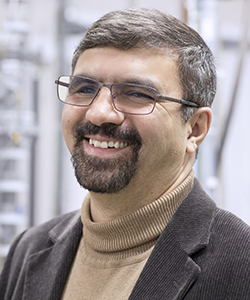New milestone achieved: 30 Resource Recovery doctoral students
2021-12-22

The programme has grown in popularity since it was founded in 2010. Earlier, the number of doctoral students held steady at around 20, but that has long since passed.
Increase in funding and external doctoral students
Tomas Wahnström is Director of Studies for the doctoral education programme in Resource Recovery. He says that recent increased support, both internally and externally, has enabled the programme to expand significantly.
“For example, we have received funding from the Faculty, which has made a big difference to our ability to accept doctoral students,” said Tomas Wahnström.
In addition, about two thirds of the doctoral students are external doctoral students, which has also made expansion possible.
“We have many externally funded doctoral students, which means that the doctoral student's salary is paid by another organisation where the doctoral student is employed. It is a good investment for companies that want to be at the forefront of their field,” he said.
Significant diversity
In recent years, there has also been an improvement when it comes to diversity among the doctoral students.
“We have a good mix in the group; as it looks now, we have a gender mixed group and many nationalities represented. It is a very international and rewarding environment,” said Tomas Wahnström.
Several international success factors

Mohammad Taherzadeh is Professor of Resource Recovery and Director of the doctoral education programme. He agrees with Tomas Wahnström on several of the factors related to its success.
“There is a significant interest in Resource Recovery as a field. Our work is highly relevant these days and many companies that have worked with fossil raw materials are in a phase of change; there is significant international interest and a new market. In this context, doctoral students are a good investment. We also see that many countries outside Europe invest a lot in this area,” said Mohammad Taherzadeh.
Our lab environments and interdisciplinarity make the university unique
The unique lab environments, and the fact that his own and his colleagues' research is at the forefront in the field, are also contributing factors, according to Mohammad Taherzadeh.
“Our lab environment is unique, which means that we offer unique opportunities for doctoral students to test their ideas. We produce quite a lot of publications; this is also a factor that promotes our reputation, and we have many big names in the field. We are clearly an attractive university,” he said.
The fact that the university is a smaller higher education institution is not something that has been an obstacle. To the contrary, the proximity to other fields and research groups creates, instead, good conditions for interdisciplinary collaboration.
“The connections between textile companies and biotechnology may not be directly obvious, but when we meet, we discover that we have many common problems and opportunities. We can easily work in an interdisciplinary way and discover new areas and collaboration opportunities. These are benefits that we have experienced in our research, and which have spread to the doctoral education programme,” he said.
“We look forward to investing even more in interdisciplinarity; it is a fantastic resource that we have. It is also an environment that we can offer these doctoral students, it gives them great opportunities to distinguish themselves and it opens doors for the future.”
What is the next step?
“We aim to continue to expand in the long term. We have created a good structure and good supervision opportunities. Before I retire, I am aiming for 50 students!” concluded Mohammad Taherzadeh.
Read more
Doctoral education programme at the Swedish Centre for Resource Recovery
Emilia Vermelin/translation Eva Medin
Suss Wilén

